25 January 2017
Y-shaped joints on a basalt flow, Lake Mývatn, Iceland
Posted by Callan Bentley
There’s something so satisfying about pahoehoe texture on the surface of a lava flow. Its pattern is readily recognizable, the means by which it forms is easily understandable, and it speaks of a very clear moment in the past, unaltered since: it’s literally a dynamically-formed feature “frozen” in time.
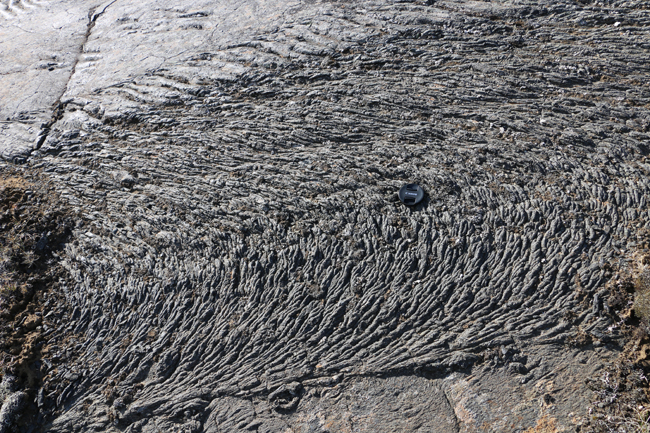
The pahoehoe imaged above is on the snout of a lava flow I visited over the summer at Lake Mývatn, on the Mid-Atlantic Ridge, in northern Iceland. [I’ve previously blogged about two other sites in the Mývatn region: Dimmuborgir and Hverir.]
I wanted to show you some beautiful Y-shaped joints today, from this same flow. The joints meet at ~120° angles and in most cases are themselves made of smaller joints that have merged. A lens cap in each image provides a sense of scale.


This is a pattern of extension – perhaps of the surface of the lava flow cooling, then being inflated from within, so the stiff outer crust was forced to expand. It broke as it did so, just like a loaf of bread that expands as it bakes:
 Modified from an original by Bread Bar None (click for source)
Modified from an original by Bread Bar None (click for source)
In places, these “miniature rifts” yawn open in an unsettling way, like toothy jaws:
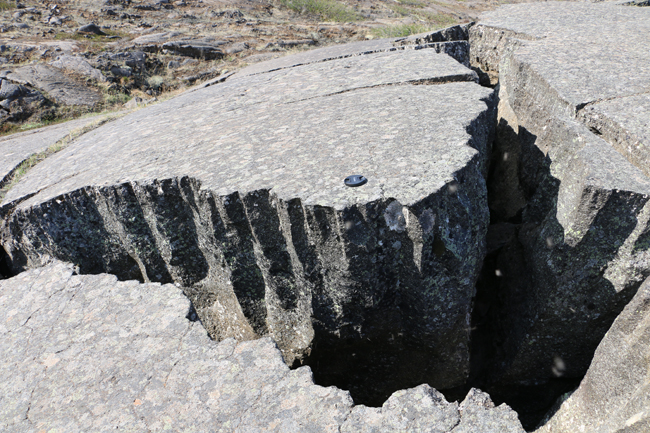
There must have been a substantial amount of inflation for the flank of the flow to form these gaping features.

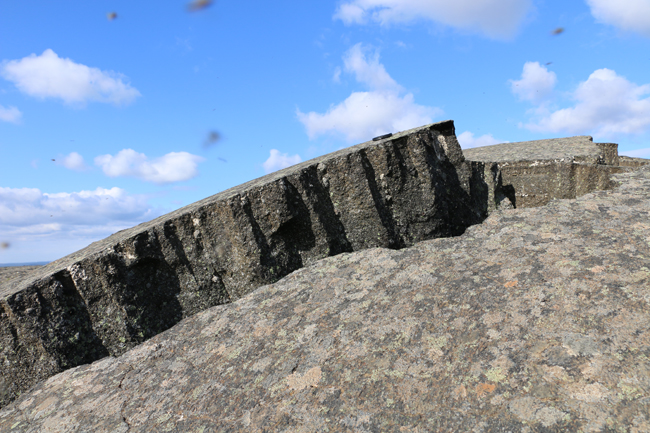
If you’ve noticed any blurry spots in the image so far, I assure you it’s not due to a dirty lens, but to the ungodly swarms of midges that plague this otherwise wonderful region.
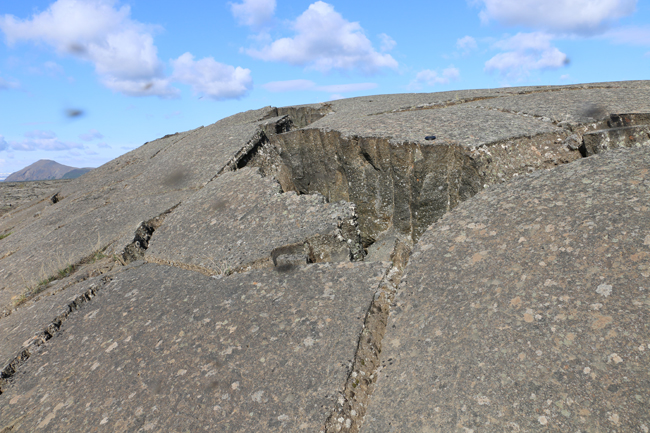
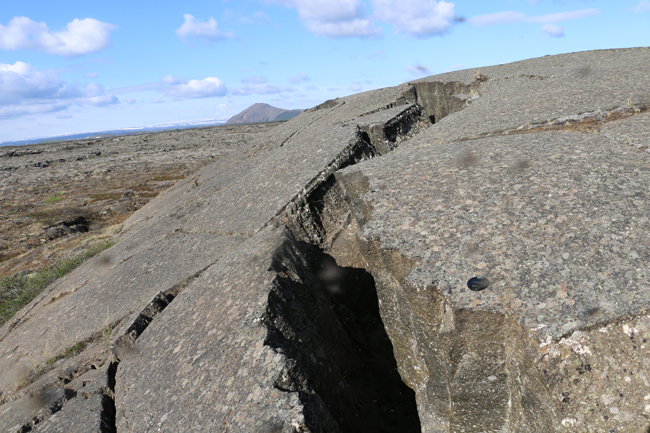
A mix of 120° angles (straight up 2D extension) and 90° angles (transtension) between sub-joints join to accommodate the stresses that made the larger joint:
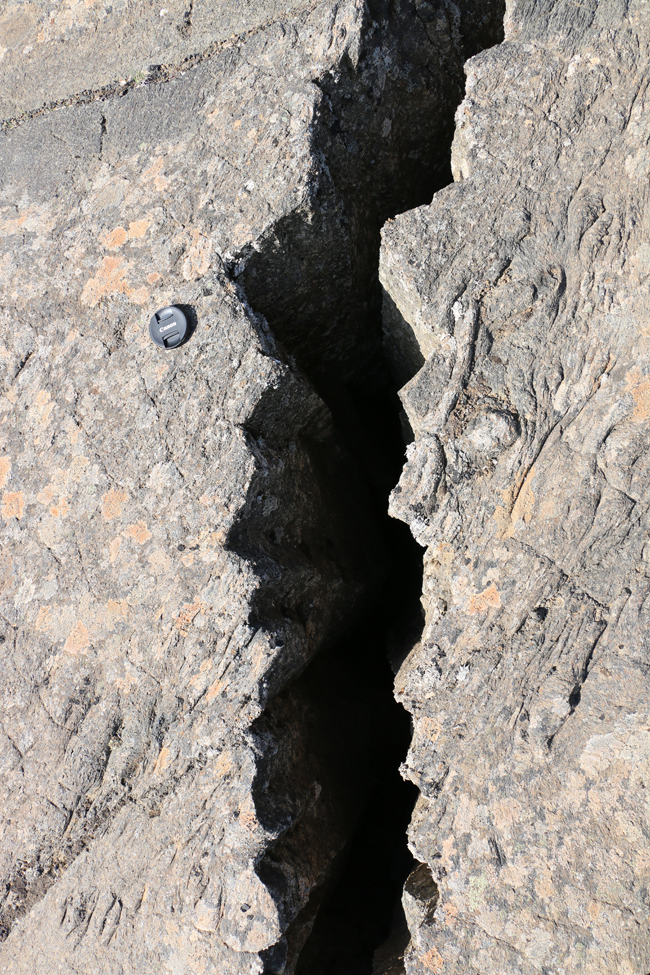
I once highlighted a similar pattern seen in a basalt flow in Hawaii. Uniformitarianism in action, eh?

Looking south toward the lake, you get a small scale version of what’s happening on a larger scale in east Africa:
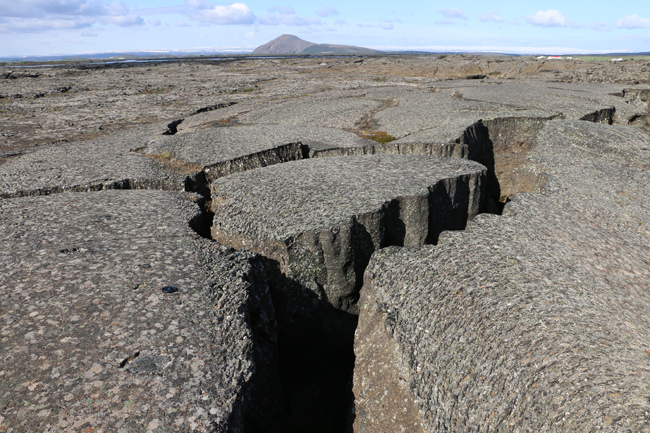
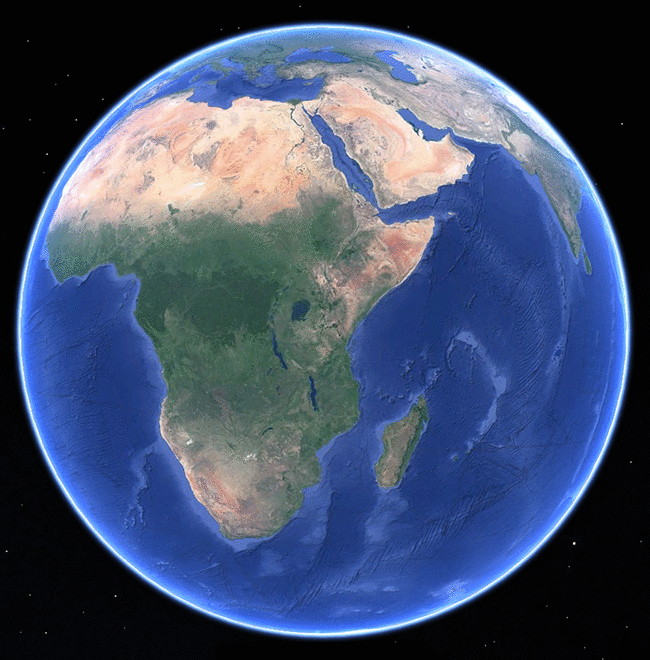 Modified by me from Google Earth
Modified by me from Google Earth
As with the bread loaf, this suggests that east Africa is undergoing extension, pushed upward from below. This results in a profoundly skewed elevation pattern for the continent as well as the cracks that have filled in with sedimentary and volcanic debris over the past several million years, resulting in an ideal repository for fossil remains of humanity’s predecessors. We have Olduvai Gorge because of this Y-shaped pattern of rifts.
Let’s return now to Iceland, and conclude with a couple of views of the thing in the opposite direction (northward) with our rental camper van in the distance for scale:




 Callan Bentley is Associate Professor of Geology at Piedmont Virginia Community College in Charlottesville, Virginia. He is a Fellow of the Geological Society of America. For his work on this blog, the National Association of Geoscience Teachers recognized him with the James Shea Award. He has also won the Outstanding Faculty Award from the State Council on Higher Education in Virginia, and the Biggs Award for Excellence in Geoscience Teaching from the Geoscience Education Division of the Geological Society of America. In previous years, Callan served as a contributing editor at EARTH magazine, President of the Geological Society of Washington and President the Geo2YC division of NAGT.
Callan Bentley is Associate Professor of Geology at Piedmont Virginia Community College in Charlottesville, Virginia. He is a Fellow of the Geological Society of America. For his work on this blog, the National Association of Geoscience Teachers recognized him with the James Shea Award. He has also won the Outstanding Faculty Award from the State Council on Higher Education in Virginia, and the Biggs Award for Excellence in Geoscience Teaching from the Geoscience Education Division of the Geological Society of America. In previous years, Callan served as a contributing editor at EARTH magazine, President of the Geological Society of Washington and President the Geo2YC division of NAGT.